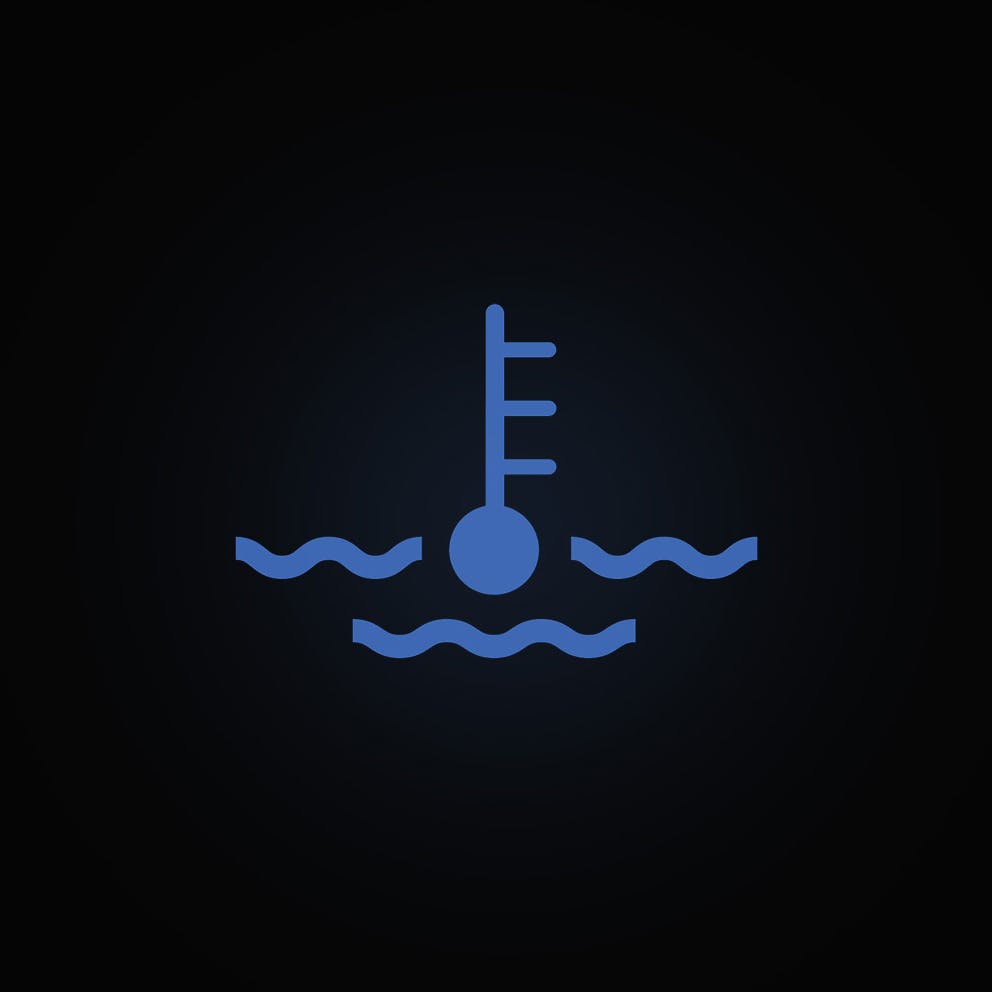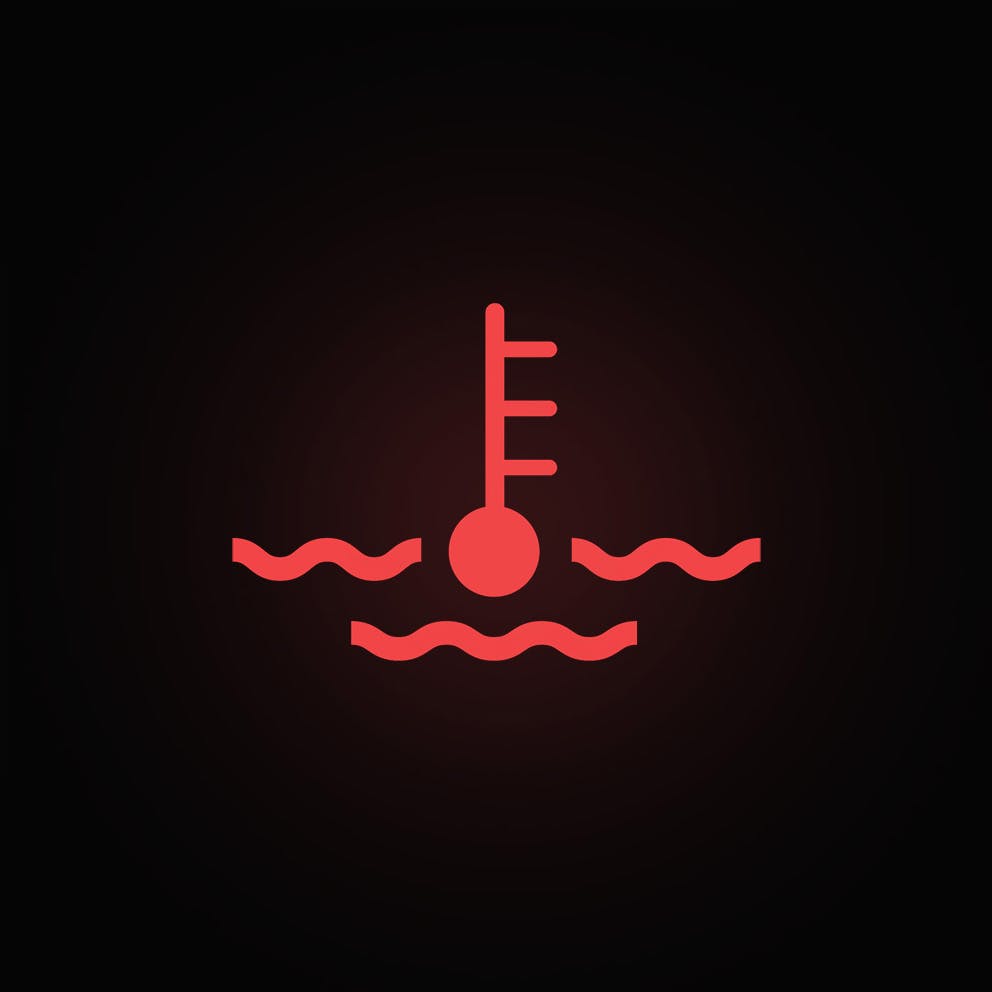Engine Coolant warning light: What is the difference between blue and red?

The engine coolant warning light can have two functions, more precisely, a warning and an informative function. Beware that there may appear two coolant warning lights on your dashboard.
The first one is blue and has only an informative function, while the red one warns of a serious problem.
Spis treści
Blue engine coolant temperature warning light:

This engine coolant light illuminates blue and informs the driver that the coolant temperature is too low. It is not recommended to rev the engine to high revs while this light is on because it is not warmed up to its optimal operating temperature.
However, the blue light goes out immediately after the temperature of the coolant reaches the value set by the manufacturer. Therefore, the low engine coolant temperature light has only an informative function, not indicating a fault, but only a low temperature of the liquid in the cooling system while the engine is cold.
Red engine coolant warning light:

While the blue engine coolant light coming on when the engine is cold is normal and does not indicate any problem, the red light coming on smells like a serious problem. The red light of the cooling liquid indicates two serious errors, either a low liquid level in the cooling system or a high temperature of the cooling liquid.
However, both of these problems are very serious. If this light comes on, you should immediately stop the car and turn off the engine. Otherwise, there is a risk that the engine will start to overheat. This could damage the engine beyond the ability to repair.
However, after turning off the engine, it is necessary to wait until it cools down at least a little, about 60 °C. Otherwise, there is a risk that after opening the coolant expansion tank, the hot liquid will shoot out and scald you.
After opening the expansion tank, it is necessary first to check the coolant level. If the coolant is low, it only means two things. Either the coolant is leaking out of the engine and cooling system, or the coolant is getting into the combustion chamber.
The most common cause of coolant loss is:
cracked gasket under the cylinder head
cracked cylinder block
cracked cylinder head
cracked radiator
one of the radiator hoses is broken
Engine overheating despite enough coolant liquid
However, the red engine coolant symbol can also light up if enough fluid is in the cooling system. In this case, the light signals overheating of the engine caused by the changing coolant, which, however, means an increase in the temperature of the coolant and the engine.
There can be several reasons for overheating the engine. However, it should be noted that they are not as serious as a problem with a coolant leak, and their solution is also not so financially expensive.
The most common cause of overheating of the cooling liquid is a faulty thermostat, which is either stuck or completely closed, due to which the cooling liquid flows only through a small cooling circuit and thus does not reach the radiator. This leads to a sharp increase in its temperature, and if the thermostat does not open in time, it will cause the coolant to boil and the engine to overheat.
Other causes of engine overheating include a problem with turning on the radiator fan. The radiator fan is one of the critical components of the vehicle's cooling system. Its role is to cool the coolant in the radiator.
The cooling system fan may not turn on due to the following:
electrical drive failure
blown fuse
faulty thermostat
failure of the temperature sensor to turn on the fan
faulty relay
In any case, the red engine coolant warning light indicates a serious problem that needs to be fixed as soon as possible.